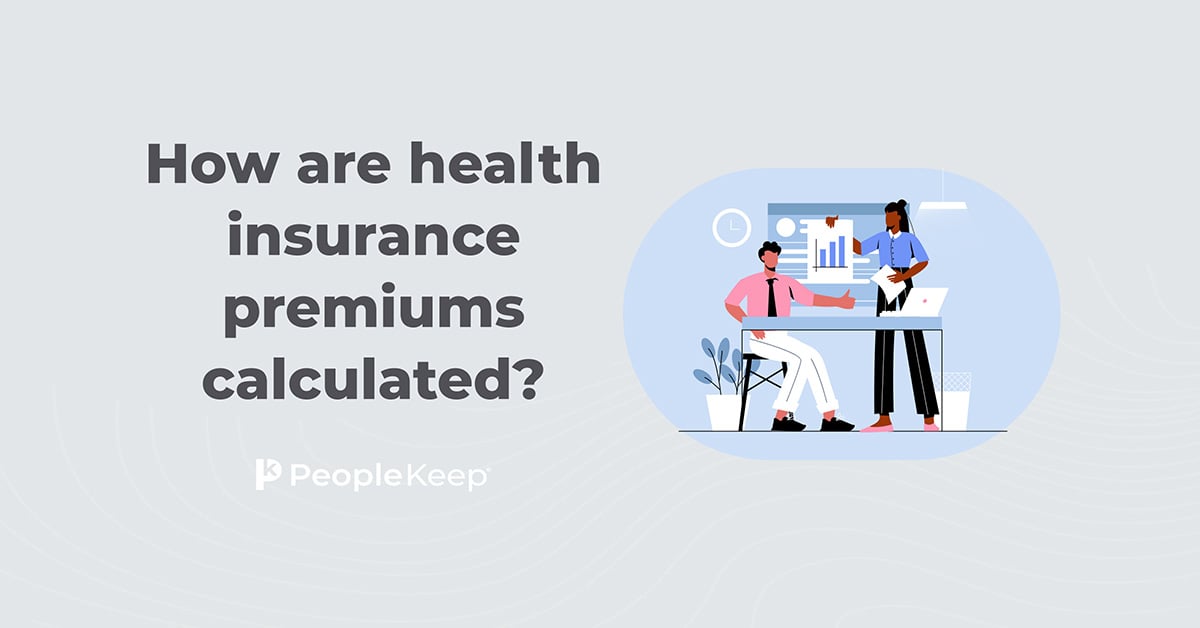Top 8 health insurance terms to know
By Elizabeth Walker on December 30, 2024 at 9:05 AM
If you're shopping for a health plan for the first time, knowing key health insurance terms can be helpful. For example, choosing the best health insurance coverage can be tricky if you don't know the difference between a premium and a deductible.
Some age groups have more health plan terminology knowledge than others. On average, 80% of baby boomers know essential healthcare terms compared to 76% of Gen X, 68% of Millennials, and 60% of Gen Z1. To help strengthen your knowledge no matter your age, we'll walk you through common health insurance terms you need to know.
In this blog post, you’ll learn:
- Essential terms to help you make informed decisions about health insurance coverage.
- The differences between government medical programs like Medicare and Medicaid.
- Concepts that can help you make health insurance costs more affordable, including premium tax credits.
1. Premium
Many types of health insurance plans exist, such as health maintenance organization (HMO) and preferred provider organization (PPO) policies. You can also have a no-deductible, low deductible, or high deductible health plan (HDHP). But there's one thing all coverage options have in common—a health insurance premium.
Your premium rate is the dollar amount you pay your insurance company to maintain active coverage. Most people pay theirs monthly. But depending on your type of insurance plan, your payments could be quarterly or annual.
When researching plans, the premium is usually the first cost you'll see. You’ll want to consider it when budgeting your monthly medical expenses. But when choosing insurance policies, you also need to know how your premium rate may affect other costs.
For example, a plan with a low monthly premium might have a higher deductible or copayment. This could increase your total out-of-pocket costs if you see primary care physicians or specialists often.
Luckily, there are a few ways you can control premium costs, including the following:
- Federal programs and subsidies, like premium tax credits, are available for eligible lower-income individuals and families. If you qualify, these subsidies can help you offset the costs of health insurance premiums for plans purchased on the public exchanges.
- If your employer offers you a health reimbursement arrangement (HRA) health benefit, you could get tax-free reimbursements on insurance premiums and other qualified medical expenses.
- Check to ensure the type of health plan you choose is an eligible expense for reimbursement. You may also want to choose a plan where your HRA allowance will fully or mostly cover your premium.
2. Deductible
A deductible is the dollar amount you must pay on your own for any covered medical services before your health insurance company starts to pay. For instance, if your plan has a $4,000 annual deductible, you'll pay $4,000 on your own first. Then, your insurance company will pay for all or a set percentage of your expenses for the rest of the coverage period.
A plan can have a comprehensive deductible for all services or a separate deductible for a specific service or item, such as prescription drugs. However, plans often cover the cost of essential health benefits, like preventive care, before you've paid your full deductible amount. If you have a plan from the public Marketplace, your insurer will cover the cost of preventive services before you reach your deductible.
Generally, plans with lower deductibles have higher premium costs. In contrast, insurance policies with higher deductibles tend to have lower premium costs. Evaluating your specific needs and medical conditions may help you decide the right deductible amount for your budget.
3. Copayment
A copayment, or copay, is a fixed dollar amount that you'll pay for a specific covered medical service. These services often include office visits and prescriptions.
Copay amounts can vary depending on the kind of healthcare service you receive and the network of providers you choose. According to KFF, the average copayments are $26 for a primary care visit, $42 for a visit to a specialist, and $343 for a hospital admission2. Copays are usually due at the time of service, and you pay them directly to your providers.
Generally, copays won't count toward your deductible. However, this depends on your plan. So, read your plan details carefully or call your health insurer to find out what your specific tier of coverage allows.
Here’s an example of how a plan may structure its copays by service or item:
|
Emergency medical care |
Primary care physician visit |
Generic drug |
|
$250 copay |
$20 copay |
$10 copay |
Even though they're usually smaller amounts, these payments can add up over time. If you visit your network doctor often, look for a plan with an affordable copay amount to maximize your overall health savings.
4. Coinsurance
Coinsurance is the percentage of costs an insured person must pay each year toward covered health services after meeting their deductible. Coinsurance and copays are two main ways health insurance companies spread risk among their plan participants.
Many insurance companies will use a 70/30 coinsurance split rate. If this is the case for your plan, that means your insurer will cover 70% of the charges for any covered medical services. This leaves you responsible for the remaining 30%. Until you meet your deductible, you must typically pay 100% of these expenses.
Coinsurance rates can also significantly affect insurance premiums. Like deductibles, health insurance policies with low premiums tend to have higher coinsurance. Health coverage with higher premiums typically has lower coinsurance.
Coinsurance generally applies to in-network services. Your plan may not provide coverage for out-of-network providers. Coinsurance also vary by medical plan. So, check your policy documents for your specific rate.
5. Out-of-pocket maximum
An out-of-pocket maximum is just what it sounds like: the maximum amount you'll pay for covered services during a period of time, usually a full benefit year. A plan will list its out-of-pocket maximum amount when you’re comparing and shopping for coverage. Knowing the maximum limit ahead of time can help you budget appropriately and avoid financial pitfalls.
Here are the 2025 maximum out-of-pocket limits for plans on the Health Insurance Marketplace:
|
Individual coverage3 |
Family plan |
|
$9,200 |
$18,400 |
There are some limitations on what can count toward out-of-pocket maximums. This varies from plan to plan but typically includes copays, deductibles, and coinsurance costs. Your out-of-pocket maximum doesn't include your premium cost, out-of-network services, or any medical expenses your plan doesn't cover. However, some plans may have a separate out-of-pocket maximum for out-of-network services.
Once you've paid your out-of-pocket maximum, your insurance will pay 100% of your covered medical expenses for the remainder of the benefit year. But these expenses must be medically necessary. Your plan also may not cover services from out-of-network providers.
6. Pre-existing condition
A pre-existing condition is any disease, disability, or health condition you have before enrolling in health coverage with an insurance company.
Before the Affordable Care Act (ACA), health insurers in the individual market used medical underwriting in nearly every state to examine individuals' medical records.
Using medical underwriting, insurers could do the following:
- Reject health coverage applications
- Charge individuals with pre-existing conditions higher monthly premium costs
- Deny coverage for certain medical services or items
- Require a waiting period before coverage becomes active
Today, pre-existing condition exclusion is illegal in most cases. A few types of health insurance, like short-term health insurance and indemnity plans, still allow it.
Confirm your covered benefits if you're on a short-term medical plan or have to renew your individual coverage every three to six months. Your insurance company may be able to deny you coverage based on your previous medical history or pre-existing condition.
7. Medicare
Medicare is a federally funded health insurance program for people 65 or older or people with disabilities. Medicare premiums vary from year to year. But the factors the government uses to calculate your premium rate depend on which part you have.
The Original Medicare plan has two parts: A and B. Part A is a hospital insurance plan that covers various medical care, such as inpatient hospital stays, skilled nursing care, and certain home healthcare. But Part A doesn't cover custodial or long-term care.
Medicare Part B is medical insurance coverage for physician services, medical supplies, and clinic care.
Medicare Part C, also the Medicare Advantage program, is run by private insurance companies.
With Medicare Part C, an insured person will typically receive:
- Full coverage for Medicare Parts A and B.
- Extra benefits without additional costs, such as:
- Medical transportation services
- Dental care and vision coverage
- Hearing coverage
- Health and wellness programs
- Lower out-of-pocket medical costs than the Original Medicare plan due to a set maximum limit.
Medicare Part D is optional supplemental coverage that helps you pay for prescription drug costs. If you have Part C benefits, it may also include Part D coverage.
8. Medicaid
Medicaid provides coverage for those with limited incomes and resources—regardless of age. You must meet eligibility requirements to qualify for Medicaid.
The federal and state governments jointly fund the Medicaid program, but each state runs its own program. The federal government sets general standards that all states must follow, including mandatory covered benefits.
Medicaid typically includes a variety of covered services, including:
- Inpatient and outpatient hospital services
- Physician services
- Laboratory and X-ray services
- Home health services
States can offer optional additional benefits, such as:
- Prescription drug coverage
- Case management
- Physical therapy
- Occupational therapy
Conclusion
With a good understanding of common healthcare terms, you should be able to shop for a health insurance plan without added stress. Choosing your health insurance policy empowers you to control your budget and medical bills rather than getting stuck with a group insurance health plan that may not fit your needs.
Health insurance shopping is even better when you have an HRA to get tax-free reimbursements on your health insurance premiums and healthcare expenses to allow for flexible spending. If your employer offers an HRA, check out your summary plan description for details so you can choose the right health insurance plan.
This article was originally published on June 10, 2021. It was last updated on December 30, 2024.
Check out more resources
See these related articles

How are health insurance premiums calculated?
Ever wonder how health insurance premiums are determined? This comprehensive blog breaks down the factors that influence the cost of your health insurance.

Understanding health insurance - A basic overview
Get a basic overview of health insurance. Learn how it works, key terms, and how to choose the right plan with this guide to health insurance explained.

What is a health insurance premium?
A health insurance premium is the amount of money you pay to your insurance provider for your health coverage. Learn more about health insurance premiums here.



